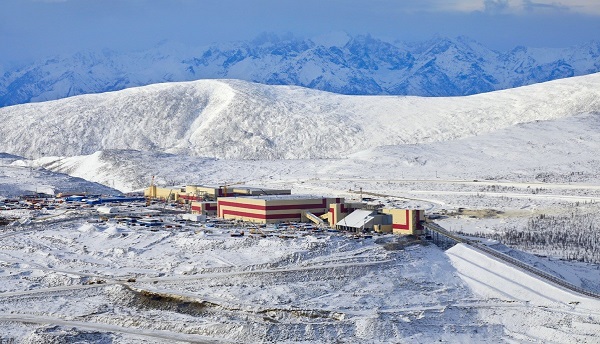Given its important role in the energy transition, experts believed the global demand for copper will grow in the long term.

Udokan Copper's facilities in the Trans-Baikal region. [Photo provided to chinadaily.com.cn]
The consensus forecast of the economists and banking analysts surveyed by FocusEconomics indicated the average price of the red metal, a base metal used in the electric power industry, construction and machine-building, will be $7,660 per tonne in 2023 and rise to around $8,000 in 2024.
The price now is around $8,300 a tonne.
The UN has agreed on the need to reduce greenhouse gas emissions in order to prevent global temperatures from rising by more than 1.5 degrees by 2050. To reach the target, the world's major economies are driving the shift from fossil fuels to renewable energy and vehicle electrification. Electric vehicles, solar panels and wind turbines all require more copper.
Wood Mackenzie, a consulting company, estimated that the world will need an additional 9.7 million tonnes of copper in the coming decade in order to gradually move towards net zero (a net-zero balance in terms of greenhouse gas emissions).
"To date, a shortfall of this magnitude has never been overcome within a decade", Wood Mackenzie analysts wrote in their October report.
Udokan Copper, which is developing the largest copper deposit in Russia, will begin production in 2023. Udokan is located in Russia's Far East and near the Chinese border, making it easier for transportation. Udokan is one of the greenfield projects launched in the last decade that will increase the supply of copper.
Currently, the supply-and-demand balance remains rather fraught. First, commercial copper inventories in storage facilities approved by the Shanghai and London metal exchanges are now close to records lows; there is enough for only a few days of global copper consumption. Second, there is a shortage of copper scrap in the market that could be used for smelting copper as an alternative to raw materials extracted from mines.
Third, the largest copper-producing countries continue to face challenges affecting the regular supply of copper. In Chile, this is due to a decrease in copper content in the ore in existing deposits, as well as periodic droughts that are forcing mines to make additional investments in seawater desalination to support their operations.
China continues its intense development of industries related to the energy transition. The country plans to build at least 1,200 gigawatts of renewable – solar and wind – power generation capacity by 2030. China is one of the world's largest manufacturer of electric vehicles and expects that by 2030 40% of the cars sold in the country will be electric.
Moreover, Udokan is in an optimal geographic location for shipping copper to China. In addition, the company is focused on environmental protection and plans to reduce its carbon footprint considerably by 2035.



